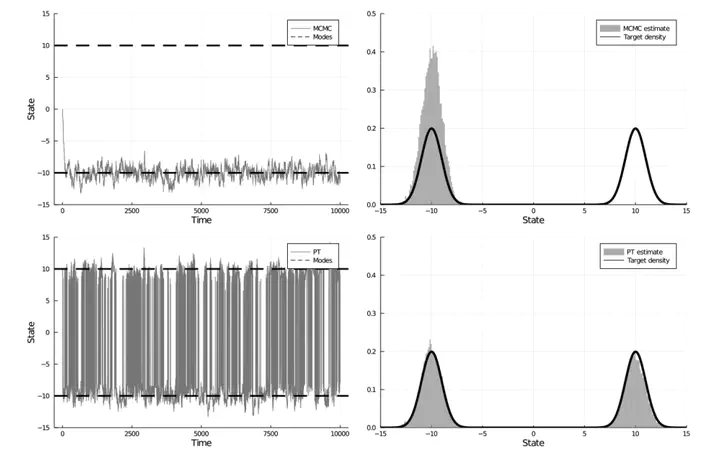Doctoral thesis: Non-reversible parallel tempering on optimized paths

Abstract
Parallel tempering (PT) methods are a popular class of Markov chain Monte Carlo schemes used to sample complex high-dimensional probability distributions. They rely on a collection of
We show theoretically and empirically that a class of non-reversible PT methods dominates its reversible counterparts. These results are exploited to identify the optimal annealing schedule for non-reversible PT and to develop an iterative scheme approximating this schedule. The proposed methodology is applicable to sample from a distribution
The performance of non-reversible PT depends on how quickly a sample from the reference distribution makes its way to the target, which in turn depends on the particular path of annealing distributions. Traditionally PT has used only simple paths constructed from convex combinations of the reference and target log-densities; we demonstrate that this path performs poorly in the setting where the reference and target are nearly mutually singular. To address this issue, we expand the framework of PT to general families of paths, formulate the choice of a path as an optimization problem that admits tractable gradient estimates, and propose a flexible new family of spline interpolation paths for use in practice. We show that PT induces a geometry on the space of probability distributions and characterize these optimal paths as length minimizing geodesics between
Finally, we identify distinct scaling limits for the non-reversible and reversible schemes, the former being a piecewise-deterministic Markov process and the latter a diffusion